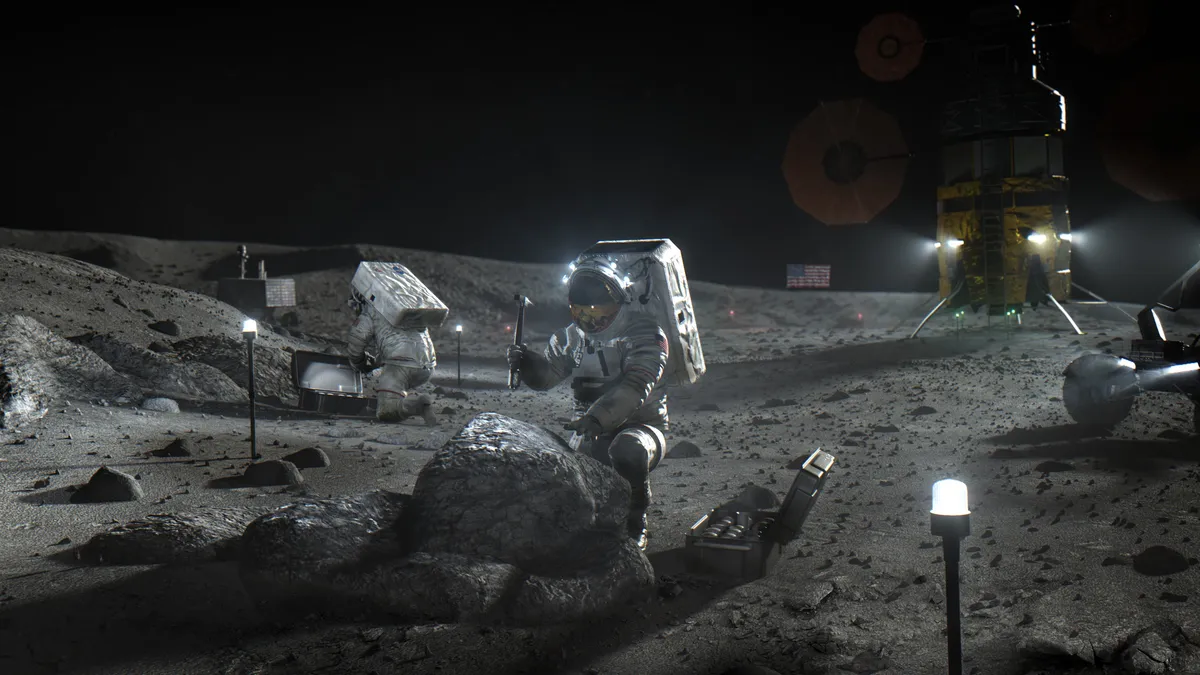
Earlier today, the Committee on Appropriations unveiled its recommendations for discretionary funding for fiscal year 2026 (FY 2026). This proposed budget not only suggests substantial cuts to various international programs, education, health sectors, and other departments, but it also indicates significant reductions in funding for multiple NASA programs and initiatives. Overall, the proposed budget allocates $7 billion for lunar exploration and $1 billion for Mars-focused programs, yet it simultaneously imposes deep cuts and cancels critical programs essential to NASA’s Moon to Mars and scientific objectives.
The budget proposal emphasizes the importance of NASA's priorities, particularly the return of astronauts to the Moon ahead of China, which aims to send its first taikonauts to the lunar surface by 2030. However, the budget simultaneously recommends the cancellation of key missions, including the Space Launch System (SLS), Orion, Gateway, and the Mars Sample Return (MSR) missions. Additionally, it directs NASA to explore more cost-effective solutions, particularly in areas like commercial launch services and space stations.
In comparison to FY 2025, the budget calls for an overall reduction of $6.34 billion, bringing NASA's budget down to approximately $18.8 billion—a level not seen since 1980 when adjusted for inflation.
Despite the cuts, the proposed budget designates $647 million for Human Space Exploration, specifically targeting Mars programs. This includes the controversial sample-return mission, which will now fall under the responsibility of future crewed missions slated for the 2030s. This shift marks a reversal from NASA's earlier plans for a joint robotic sample-return mission involving NASA and the European Space Agency (ESA). Budget constraints and slow progress in the Moon to Mars mission architecture have largely driven this decision.
Notably, the proposed budget indicates a lack of clarity regarding a timeline for crewed missions to Mars, positioning the MSR as a cost-effective interim solution. However, this mission has faced budgetary challenges, leading to its classification as grossly over budget and unaffordable.
In terms of the Artemis Program, NASA is again confronted with significant restructuring of its mission architecture and further budget cuts. The proposed budget outlines a reduction of $879 million for Legacy Human Exploration Systems, suggesting a phase-out of the SLS and Orion spacecraft following the completion of the Artemis III mission.
Initially, NASA had planned to utilize the SLS to deliver components of the Lunar Gateway to the Moon, with astronaut missions expected to commence by 2028. However, due to the expedited timeline announced in 2019, NASA was tasked with returning astronauts to the Moon no later than 2024, which led to a deprioritization of the Gateway and a contract awarded to SpaceX for launching the station’s core elements.
With the proposed budget, it appears that NASA may cancel the SLS, Orion, and Gateway missions after 2027. The SLS, for example, has faced criticism for its exorbitant cost of $4 billion per launch and has been reported as being 140 percent over budget.
The budget recommendations also propose deep cuts to NASA’s Earth Science programs, reminiscent of the first Trump administration's approach. The report highlights the Landsat Next mission as a low-priority climate monitoring project, previously scheduled for launch in late 2030 or early 2031. Instead, NASA has been directed to restructure this $2 billion mission to develop more affordable solutions for maintaining continuity in Landsat imagery.
Furthermore, the proposal suggests a $531 million reduction in funding for Space Technology programs, potentially affecting NASA's research into innovative propulsion systems, including the Demonstration Rocket for Agile Cislunar Operations (DRACO). The commercial sector is viewed as a preferable alternative for many projects deemed unnecessary for NASA.
Other areas marked for reductions include Mission Support, Earth Science, STEM engagement, and the International Space Station (ISS). A significant $1.134 billion cut is recommended for Mission Support, which will necessitate streamlining operations, IT services, and facility maintenance. Similarly, a $508 million reduction is proposed for the ISS, as its retirement is anticipated by 2030. This reduction reflects a shift towards a more cost-effective commercial approach to human activities in space.
Moreover, the report indicates a reduced crew size for the ISS and cuts in funding for onboard research, despite the critical nature of this research for future Moon and Mars missions. The ISS is expected to be replaced post-2030 by commercial space stations, which further underscores the shift towards privatization in space exploration.
A thorough examination of the budget reveals a clear intention to prioritize certain aspects of NASA's mission while imposing cuts that could hinder its overall capabilities. It notably targets funding for programs related to Earth science and climate monitoring, as well as initiatives aligned with Diversity, Equity, and Inclusion (DEI). The emphasis on outsourcing mission elements to the commercial space sector aligns with the policies established during the Trump administration.
Despite these challenges, NASA Administrator Janet Petro expressed gratitude in a recent press release, stating, "This proposal includes investments to simultaneously pursue exploration of the Moon and Mars while still prioritizing critical science and technology research." She emphasized her commitment to working closely with the administration and Congress to ensure continued progress in achieving NASA's ambitious goals.